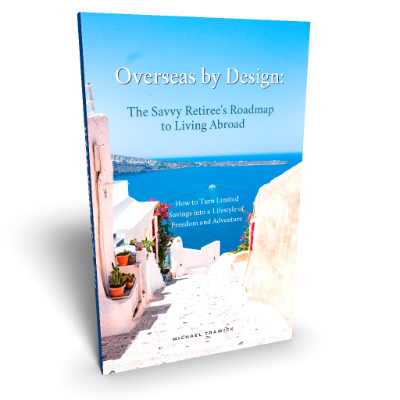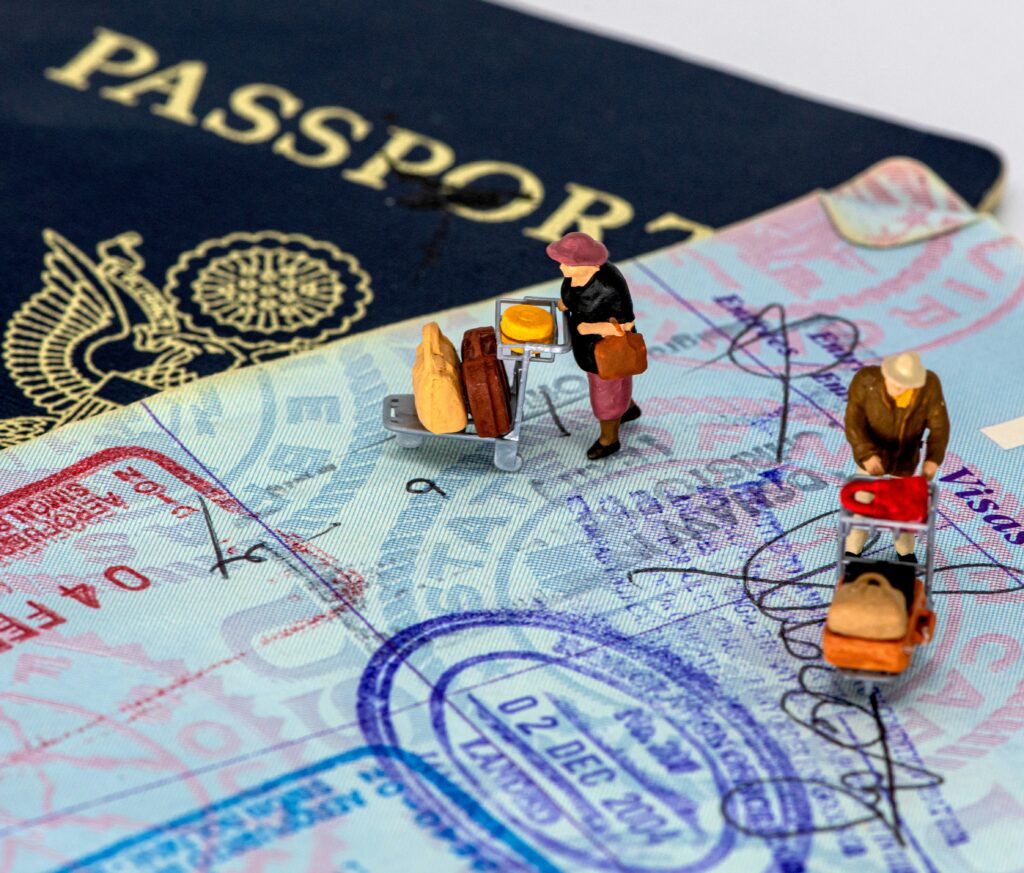Retiring abroad is easier than ever before, especially with countries around the world offering visa programs specifically designed to attract retirees. So for those dreaming of sun-soaked beaches, charming old towns, lower living costs, or simply a change of pace, a well-structured retirement visa can be your golden ticket. But let’s face it: nobody wants to spend their golden years buried in paperwork or navigating overly complex immigration systems.
Luckily, some countries have taken the hint. They’ve created visa programs that are not only affordable but also simple to apply for, even if you’re not a millionaire or a legal eagle. Whether you’re drawing a pension, earning passive income, or living off savings, these visas are accessible to a wide range of retirees looking for a fresh start.
This post looks at five of the easiest retirement visas to apply for, each offering its own version of paradise. Here we’ll explore the retirement visa options in Panama, Portugal, Costa Rica, the Philippines, and Malaysia. These countries not only make the bureaucratic process relatively pain-free but also serve up an enviable mix of warm climates, welcoming communities, affordable living, and healthcare systems that won’t bankrupt you.
So whether you prioritize low cost of living, access to quality medical care, tax breaks, or a smooth path to residency (or even citizenship), one of these five destinations might be your perfect match. Let’s dive into what makes them so appealing, and which one might best suit your retirement goals.
Panama – Pensionado Visa
Panama’s Pensionado program grants permanent residency to anyone with a lifetime pension of $1,000 per month (plus $250 per dependent). Additionally, there is no minimum age. The visa process is quick, and approval entitles retirees to extensive benefits.
Benefits:
- Easy qualifications: A pension of $1,000/month meets the requirement, a low threshold that immediately gives you indefinite residency in Panama.
- Retiree perks: Pensionado residents enjoy big discounts on medical care, utilities, airfare, entertainment, and more. Panama also exempts foreign pensions from tax, helping your retirement income go further.
Drawbacks:
- Maintain income & paperwork: You must maintain the qualifying pension. Some bureaucratic processes (getting ID cards, etc.) can be slow, so patience is needed.
- Language: Everyday life is smoother with some Spanish, since English is not widely spoken outside tourist spots.
Portugal – D7 Passive Income Visa
Portugal’s D7 visa is a popular retirement option for citizens of most countries with a stable income of around €870 per month (≈$900). You apply in your home country, then receive a temporary residence permit in Portugal that can be renewed.
Benefits:
- No big investment: Unlike “golden visas,” the D7 only requires showing moderate passive income (pensions, savings, etc.) – no large upfront investment. This makes it very accessible.
- Path to EU citizenship: After 5 years of residency on the D7, you can apply for permanent residence or Portuguese citizenship. Retirees also enjoy Portugal’s safe, sunny climate and tax breaks (under the NHR program, foreign pensions can be taxed at only 10% for 10 years).
Drawbacks:
- Advance application: The D7 must be obtained at a Portuguese consulate before you move, which involves some paperwork and waiting.
- Residency obligations: To keep your residency (and later qualify for citizenship), you must spend most of each year in Portugal and meet basic Portuguese language requirements for integration.
Costa Rica – Pensionado Visa
Costa Rica offers one of the easiest retirement visas. The Pensionado visa requires a guaranteed pension of just $1,000 per month. In addition, it’s issued for 2 years at a time and is renewable indefinitely (after 3 years you can become a permanent resident). Spouses and dependents can be included.
Benefits:
- Very low requirement: $1,000/month pension is enough to qualify – one of the lowest financial requirements worldwide for a retirement visa.
- High quality of life: Costa Rica is known for its excellent healthcare system, political stability, and beautiful environment. There’s a large expat community, and you’re only required to spend one day per year in-country to maintain your residency.
Drawbacks:
- Costs creeping up: The cost of living has been rising in Costa Rica, especially in popular expat areas. It’s still affordable, but not as cheap as it once was.
- Bureaucracy: Government paperwork can be slow. Processes like registering for healthcare, buying property, or getting a driver’s license may require extra time and patience (or hiring a local facilitator).
Philippines – SRRV (Special Retiree’s Visa)
The SRRV in the Philippines is extremely flexible. It’s open to people as young as 35. One option to qualify is to prove a pension of $800/month and make a $10,000 bank deposit (if no pension, a $20,000 deposit is required). Upon approval, you get permanent resident status.
Benefits:
- Easy and inclusive: The age and income criteria are very light – even early retirees can qualify. The SRRV is a lifetime visa, so you won’t need frequent renewals.
- Low-cost living: The Philippines has a low cost of living and an English-speaking population. Your foreign retirement income is not taxed by the Philippines, and everyday expenses (housing, food, healthcare) are very budget-friendly.
Drawbacks:
- Annual fee & check-in: SRRV holders pay a small annual fee (about $360) and must report to the immigration authority each year. These are minor formalities but worth noting.
- Property ownership limits: Foreigners cannot own land in the Philippines. You can buy condos or lease properties, but purchasing land outright isn’t allowed – a drawback if owning a house is your goal.
Malaysia – “My Second Home” (MM2H) Visa
Malaysia’s MM2H program provides a renewable 10-year visa for long-term residents. The program’s rules were tightened recently, so requirements now include significant proof of income/assets (e.g. a fixed deposit of around $150,000 and high monthly offshore income). Despite the higher bar, MM2H remains a straightforward option.
Benefits:
- Long-term security: A 10-year, multiple-entry visa lets you settle in Malaysia for the long haul. You can bring your spouse and children, and enjoy modern amenities in an English-speaking environment.
- Tax advantages: Malaysia does not tax foreign-sourced income, so your overseas pension or investment earnings won’t be taxed locally. Combined with Malaysia’s relatively low living costs, this makes for an attractive setup for retirees.
Drawbacks:
- High financial bar: The MM2H requires a substantial financial commitment, and authorities have been known to adjust the rules (and minimum income/deposit amounts) over time.
- No citizenship pathway: MM2H is a long-term residence visa and does not lead to permanent residency or citizenship. If you’re seeking eventual citizenship, Malaysia won’t offer that via this program.
Conclusion
These five countries all make it easy to retire abroad by offering special visas for retirees. The “easiest” visa for you will depend on your finances and preferences. For example, Panama and Costa Rica have the lowest income hurdles; Portugal opens the door to Europe; the Philippines is very flexible; and Malaysia offers modern comforts at a higher financial cost. By choosing the right fit, you can enjoy your retirement in a welcoming new country with ease.
If you’re considering any of these countries for your retirement, I suggest you explore further. You can check out my post, Thinking of Retiring Abroad? 7 Key Questions to Ask First, for additional resources and links to continue your research.
I have also released my new book, now a #1 bestseller, Overseas by Design: The Savvy Retiree’s Roadmap to Living Abroad, available on Amazon as a digital download, or in paperback. It’s a comprehensive, no-fluff guide that breaks down the top 20 retirement destinations around the world, complete with residency options, cost comparisons, expat tips, and insider advice from two years of research. One of the most valuable sections offers detailed, easy-to-understand visa information for each country, helping you confidently take the next step. If you’re ready to take your retirement dreams seriously and want a clear, honest roadmap to get started, this book was written for you.

Note: Exact requirements and benefits frequently change, so it is critical to verify details with official government sources or consult an immigration lawyer before starting the process.
Sources:
- https://internationalliving.com/best-places-in-the-world-for-visa-and-retiree-benefits/
- https://www.greenbacktaxservices.com/knowledge-center/tax-free-incentives-retirement-countries/
- https://www.youtube.com/watch?v=ZR0DtiF51aM
- https://wherecani.live/countries-with-retirement-visas/
- https://www.axatravelinsurance.com/resources/guides/countries-with-a-retirement-visa
- https://digitalemigre.com/relocation/best-retirement-visas-in-europe/
- https://www.marketwatch.com/story/want-to-retire-abroad-these-13-affordable-countries-have-the-lowest-income-requirements-for-a-retirement-visa-a82648d2
- https://wise.com/us/blog/best-places-for-americans-to-retire
- https://www.reddit.com/r/Philippines_Expats/comments/1akk2gz/questions_on_the_srrv_retirement_visa_vs_tourist/
- https://www.usnews.com/news/best-countries/best-countries-to-retire
- https://milliondollarjourney.com/best-countries-for-canadians-to-retire.htm
- https://www.investopedia.com/retirement-visas-8732833
- https://worldpassports.org/retirement-visas/
- https://www.investopedia.com/top-countries-to-retire-with-easy-citizenship-8714599

